Cylindropuntia fulgida are fantastic looking plants which are endemic to the United States and to Mexico. One might think that it has a scary appearance as well.
Cylindropuntia fulgida goes by the common name called the jumping cholla. They have inherited this name since the thorny stem can break off and jump on passersby.
Animals such as Bighorn sheep and certain deer species are found eating the juicy fruit of these plants.
Cylindropuntia fulgida has a somewhat lazy stem which tends to look like a man trying to stay upright while holding on to multiple branches. So, let us dig deep into Cylindropuntia fulgida plants and learn about how you should look after them properly.
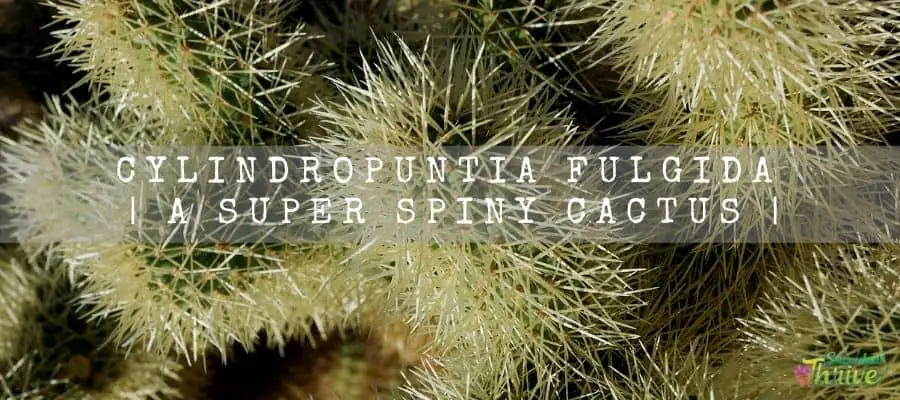
How do I identify Cylindropuntia fulgida?
Cylindropuntia fulgida tends to take the shape of a tree. They usually form with a cylindrical trunk and that literally means Cylindropuntia fulgida is an arborescent plant.
The cylindrical trunk holds on to several branches. Further they would reach a maximum height of 1.5-3.5 m.
In addition to that they would reach a maximum diameter of 8 feet ( 2.4m) too. You could spot the entire plant is covered with wart-like projections.
Cylindropuntia fulgida would consist of 0.5-1 inch ( 1.27-2.54 cm) long spines. They would grow while forming out of the areoles.
They would usually carry about 6-12 spines in each areole. Further their spines have a paper thin sheath which is useful for the reflection of light.
In fact, it illuminates the plant in different colors such as in silver, gold white or even in tan colors. Spines of the Cylindropuntia fulgida would act more like a defensive shield to protect the plant from the starving herbivores. It would in fact protect the plants from getting scorched from the direct sunlight.
Apart from these characteristics, you could identify the Cylindropuntia fulgida by their flower blossoming activity also.
They would usually bloom in pink flowers during mid summer. Those flowers would usually arise in the edges of the fruit tips.
Once they finish flowering, they will produce some fruit in red.Those flowers would be pear shaped. They may further consist of a few spines as well. One might think that it tends to look wrinkled also.
Cylindropuntia fulgida fruits will grow in the same stalk on a yearly basis. In fact, they can create a hanging fruit chain which can grow up to about 2 feet ( 60.96 cm) in length.
One look care guide
| Botanical Name | Cylindropuntia fulgida |
| Common Name | The jumping cholla |
| Plant Type | Cactus |
| Mature Size | Maximum height of 6-15 feet ( 1.8-4.5m) / 8 feet ( 2.4m) in width |
| Sun Exposure | Full sunlight |
| Soil Type | Well draining, sandy |
| Soil pH | 6.0-7.5 |
| Bloom Time | Mid summer |
| Flower Color | Pink |
| Hardiness Zones | USDA zone 8b-11b ( 9.4 degrees Celsius ( 15 degrees Fahrenheit). |
| Native Area | United States and Mexico. |
| Toxicity | Non toxic |
| Average price | 10 USD |
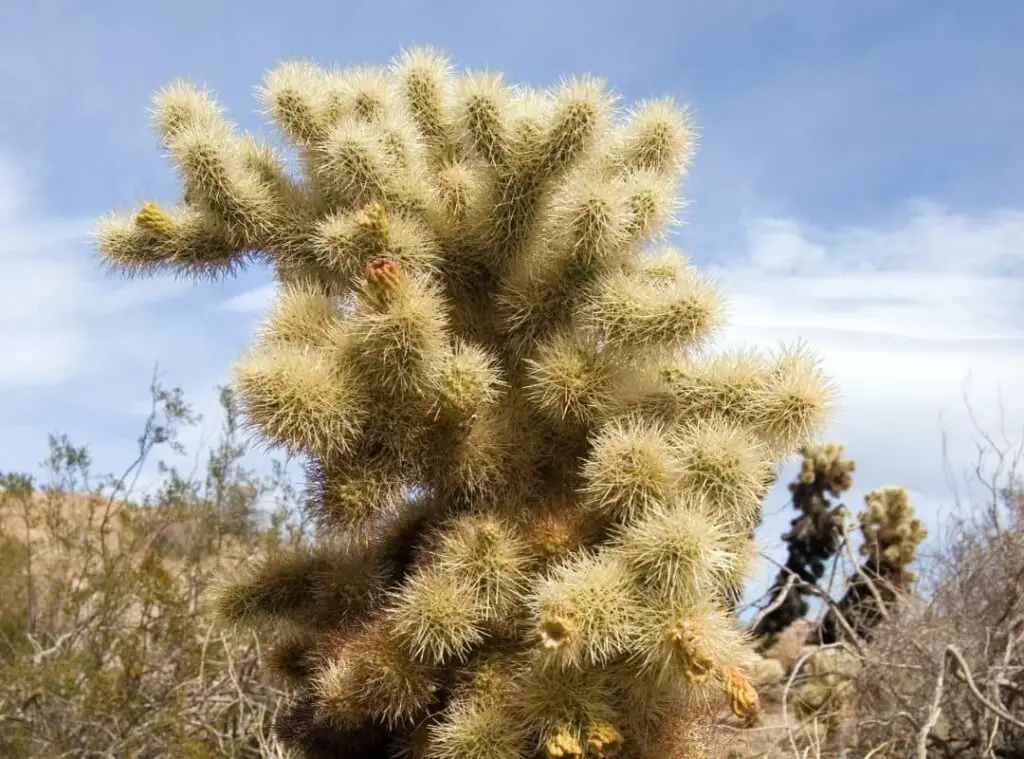
How do you take care of Cylindropuntia fulgida?
Light Requirement
Cylindropuntia fulgida usually grow in drought conditions when they grow in the wild. Literally they would prefer to have sunlight for about 6 hours per day.
It is mandatory that you fulfill their sunlight requirement as only then they can grow to their fullest potential.
Temperature and humidity
Cylindropuntia fulgida need to have warm drought temperatures to grow well. They are hardy plants and they would not perish due to small changes in the climate.
In fact, Cylindropuntia fulgida can stand cold temperatures up to 5 degrees Fahrenheit ( -15 degrees Celsius) but for short periods only.
As such I recommend growing them in a place where they will not get exposed to colder frost conditions. Generally, they would prefer to have an optimal temperature range of 50 degrees Fahrenheit ( 10 degrees Celsius).
On the other hand, it is vital that you expose them to a temperature range more than 70 degrees Fahrenheit ( 21 degrees Celsius) for their flower blossoming activity.
Is it cold hardy?
As aforesaid they are a little first hardy set of plants.
Zone
Cylindropuntia fulgida are hardy in USDA zone 8b-11b ( 9.4 degrees Celsius ( 15 degrees Fahrenheit).
Watering Requirement
It is critically important that you water them properly as it is crucial in providing the right growing conditions for them.
These are the type of plants which are adapted to grow in warm desert conditions. Hence if you forget to water them once or twice, it will not do a greater damage to the plants.
Literally under watering would create less repercussions compared to over watering. Cylindropuntia fulgida stems have conserved water in their body and hence why you need to refrain from supplying them with water in excess.
In other words, if you accidentally end up over watering them, it will contribute to root rot. In that circumstance what I would recommend you is to trim the unhealthy rotten plant parts and then report them in a fresh soil mix.
Once you newly plant a Cylindropuntia fulgida in your garden, you need to water them regularly so that it can get used to the new conditions. When they are established, you can water them less often.
Cylindropuntia fulgida may go through root rot occasionally. As such do not ever water the soil when they are moist from the previous watering session.
That is simply , if you water them when they are already moist, it could lead to over watering. . Watering them once a week during their active growing season would be adequate for them.
If you live in much warmer conditions, you need to water them more often as their moisture would evaporate faster.
On the other hand, it is very unlikely that you will have to water these plants during winter since they will be dormant during winter.
Soil Requirement Type / pH
A soil mix which has an excellent drainage is very important for the vigorous growth of the Cylindropuntia fulgida.
If you end up growing them in a poor draining soil mix, it will lead to the excess moisture to retain in the pot and make it prone towards root rot.
Besides, it would make them more prone towards other fungal and bacterial infections as well. You may also go ahead with succulent and cactus soil mixes which you can easily find in garden stores to grow them.
Moreover you may also add substances such as extra grit and sand as they will enhance the porosity and the draining factor in the soil mix.
A pH range of 6.0-7.5 would work well with the Cylindropuntia fulgida. Never grow them in an acidic or alkaline soil mix as it would be unhealthy for them.
Pot size Potting and Repotting
When it comes to selecting the right pot for the Cylindropuntia fulgida, they would opt to grow in clay or plastic pots.
If you are someone who lives in warmer conditions, I recommend growing them in plastic pots. That is because they would help to retain some moisture within the pot.
If you have a much taller Cylindropuntia fulgida, you could grow them in clay pots as they would absorb the excess moisture faster. It is important that your selected pots have ample drainage as well.
If you grow the Cylindropuntia fulgida in containers I recommend conducting the repotting periodically. You simply have to take the plant from the pot and remove the older soil and the dirt around the soil.
Next you could replant it in another container and backfill the plant with a fresh potting soil. Keep in mind to wear gloves so that you would not risk yourself getting injured.
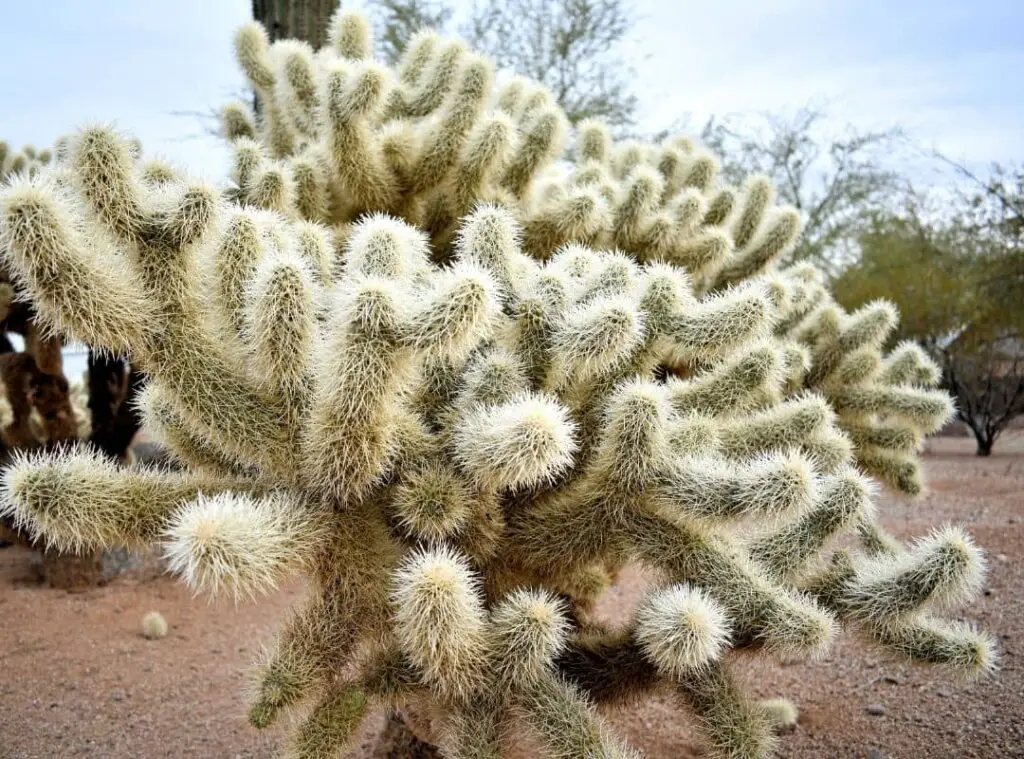
Where to Plant
Cylindropuntia fulgida have a strong demand in terms of sunlight. Hence you need to ensure that they can gain sufficient sunlight wherever you grow them.
When you grow them in the garden also, you should ensure that the selected spot will enable them to gain sufficient sunlight levels.
If you live in USDA zone 8b-11b ( 9.4 degrees Celsius ( 15 degrees Fahrenheit). you could grow them as outdoor plants.
Having said that, if you are experiencing colder conditions during most of the time, I recommend growing them indoors.
Fertilizer and time of year
You could use a typical cactus fertilizer to feed the Cylindropuntia fulgida. You may either use a water-soluble fertilizer or a granular fertilizer also for this purpose.
Make sure that you feed the Cylindropuntia fulgida periodically so that it would be beneficial for the vigorous growths of the plants. However, do not provide them too many fertilizers also as it would result in stunt growth in the plants.
Flower
Cylindropuntia fulgida blossoms with white or pink flowers. Those flowers would be 2.5 cm in diameter. Further their flowering season would fall in mid-summer.
They would usually form in the fruit tips of the Cylindropuntia fulgida. They would tend to take either an obovate shape or a tongue shape. Cylindropuntia fulgida flowers would be 12-16 mm in length.
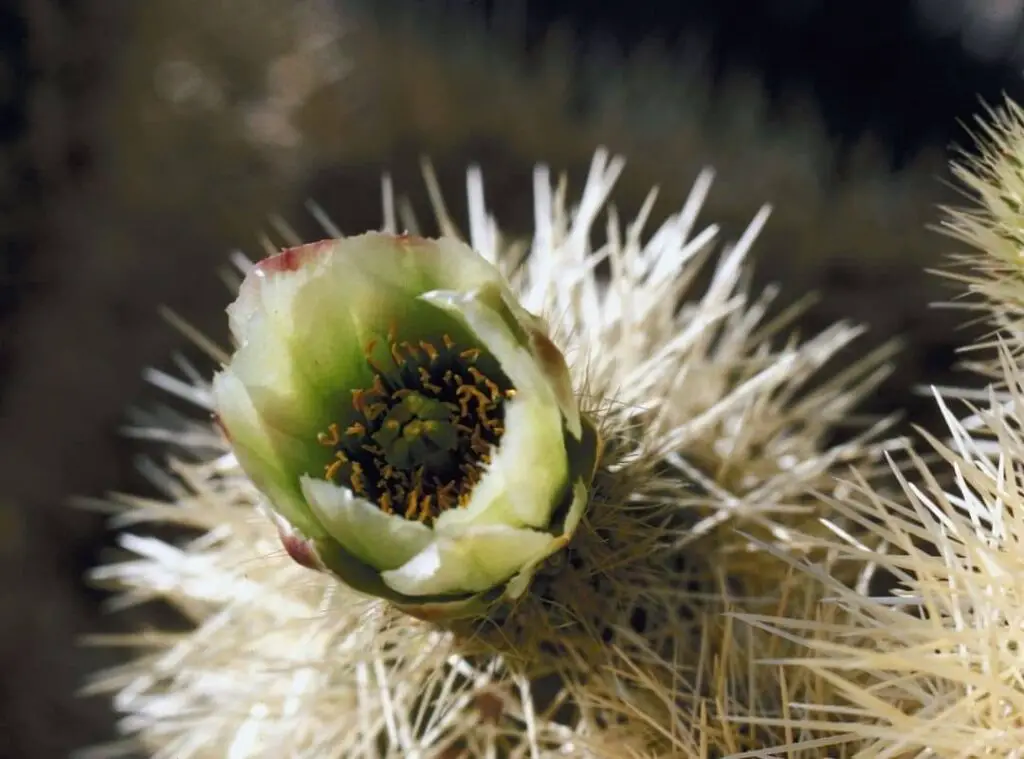
Dormancy
These beautiful plants are winter dormant. And you should stop watering them when winter comes.
Toxicity
Cylindropuntia fulgida are not poisonous. Further their spines are also not poisonous too. Having said that, it is always best to protect yourself by wearing gloves so that it would not injure you.
Common bugs and illnesses
Cylindropuntia fulgida may go through root rot if you expose them to excess water. Further it would make your plants more prone toward the rest of other fungal and bacterial infections as well.
In addition to that, scale insects may also tend to invade these plants. Those are white little sticky creatures.
Further they produce a red substance as well. To treat them you could use an alcoholic solution. It is important that you attend to these issues well in advance so that you could avoid any further repercussions.
Special Care tips
Cylindropuntia fulgida have minimum requirements in terms of the care treatments they require. What is critical is not to supply them with excess water at any time. Moreover, expose them to plenty of sunlight as well. Additionally, feedings should also be done appropriately too.
Cylindropuntia fulgida benefits
Cylindropuntia fulgida would be great picks for outdoor gardening. Moreover, they could be great picks for indoor gardening as well. They would grace the entire space irrespective of the place you grow them.
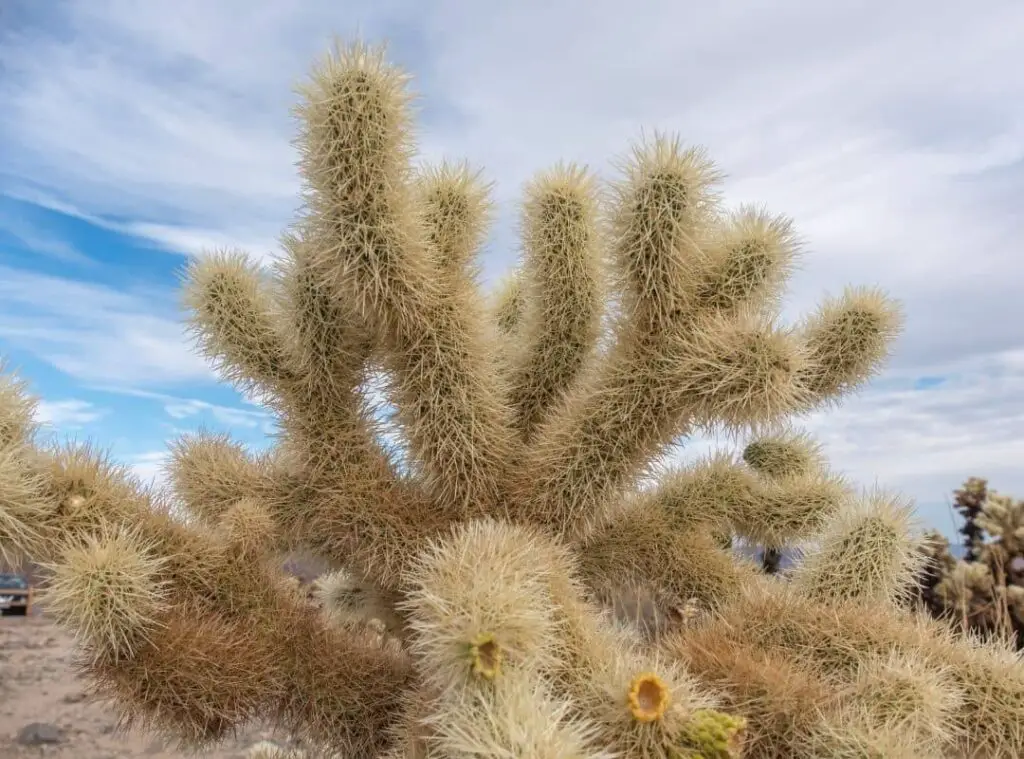
How to propagate Cylindropuntia fulgida?
You could propagate the Cylindropuntia fulgida by using the beheading method first.
To do that you simply have to cut off the head of the cactus while using a sterile pair of scissors. Ensure that you are leaving a few inches to the base when making the cutting.
Next leave it in a hot dry place where they can become calloused. After that plant them in a substrate which has excellent drainage. Consider watering them lighty when their soil is dry.
You may also use their offsets to propagate the Cylindropuntia fulgida. However, they would take some time to produce the offsets.
Once they do, you could simply snip them off and replant them in a well-draining soil mix. You need to use all sterile tools to remove the offsets unless chances are that infections could take place.
Finally, you could use the seeds propagation method also to propagate the Cylindropuntia fulgida.
Conclusion
Cylindropuntia fulgida are versatile plants which would thrive well in any environmental condition. You need to simply look after them well so that they will flourish and grow to their best potential.
All you need to ensure is that you do not expose them to much colder conditions and expose them to plenty of sunlight.
Moreover, even a starter in gardening could grow the Cylindropuntia fulgida as they are low maintained plants. So good luck with cultivating these adorable Cylindropuntia fulgida!
Read Next : Cleistocactus Strausii | Beautiful Wooly Columnar |
